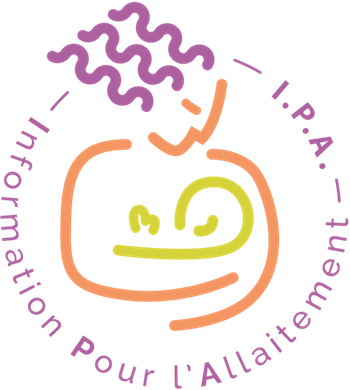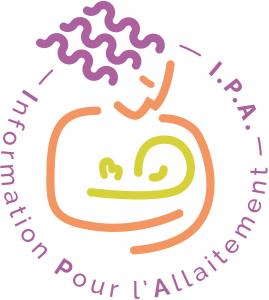Catégories
 > Alimentation > Aliment > Boisson > Lait > Lait artificiel pour nourrisson > Alimentation > Aliment > Boisson > Lait > Lait artificiel pour nourrisson
Lait artificiel pour nourrisson |
Documents disponibles dans cette catégorie (199)
Ajouter le résultat dans votre panier Faire une suggestion Affiner la recherche
Article : texte imprimé
texte imprimé
Suivi d'un classement : degré d'application du Code international de commercialisation des substituts du lait maternelArticle : texte imprimé
Hubert Barennes, Auteur ; Guenther Slesak, Auteur ; Sophie Goyet, Auteur |Exclusive breastfeeding, one of the best natural resources, needs protection and promotion. The International Code of Marketing of Breast-milk Substitutes (the Code), which aims to prevent the undermining of breastfeeding by formula advertising,[...]Article : texte imprimé
Ganga L. Srinivas, Auteur ; Kristin B. Swiler, Auteur ; Vicki A. Marsi, Auteur |Hospitals that set forth to obtain Baby-Friendly Hospital designation often face considerable challenges in implementing the purchase of formula and supplies at a fair market rate as outlined in the International Code of Marketing of Breast-milk[...]Article : texte imprimé
Objective: To assess whether in-hospital infant formula supplementation impacts later successful breastfeeding among healthy mother–infant dyads in the United States who are not intending to exclusively use infant formula. Study Design: Using[...]Article : texte imprimé
Julie Armstrong, Auteur ; Elizheeba Christie Abraham, Auteur ; Mhairi Squair, Auteur |Background: Limited data exist that explore the association between exclusive breastfeeding and dietary behaviors related to key food choices in later infancy. Objective: This study aimed to examine the relationship between exclusive breast[...]Article : texte imprimé
Karen Wambach, Auteur ; Elaine Williams Domian, Auteur ; Sallie Page-Goertz, Auteur |Background: According to the Centers for Disease Control and Prevention, Hispanic breastfeeding mothers begin early formula supplementation at higher rates than other ethnic groups, which can lead to shorter breastfeeding duration and decreased[...]Article : texte imprimé
Amy Lommen, Auteur ; Blakely Brown, Auteur ; Dusten Hollist, Auteur |Background: Relactation is the process of re-establishing a breast milk supply that has diminished or ceased. Objective: This study aimed to explore the lived experiences of women living in Montana who chose to attempt relactation. Metho[...]Article : texte imprimé
Kelly K. Gurka, Auteur ; Paige P. Hornsby, Auteur ; Emily Drake, Auteur |Background: Low-income women have the lowest rates of breastfeeding in the United States. Greater understanding of factors that predict intention to feed artificial breastmilk substitute is needed to inform the design and timing of interventions[...]Article : texte imprimé
Abigail Harrison, Auteur ; Shani Fletcher-Groves, Auteur ; Georgiana Gordon-Strachan, Auteur |Background: Exclusive breastfeeding rates (EBRs) may be influenced by sociodemographic and sociocultural factors, including maternal age, socioeconomic status, education, and breastfeeding knowledge. The EBR in Jamaica has been low and declinin[...]Article : texte imprimé
Jason P. Bentley, Auteur ; Diana Bond, Auteur ; Michelle De Vroome, Auteur |Background: Previous breastfeeding experience has been associated with subsequent infant feeding practices. However, few longitudinal studies have investigated formula-only feeding patterns or the full range of potentially associated characteri[...]Article : document cartographique imprimé
Joanna Pierro, Auteur ; Bdair Abulaimoun, Auteur ; Philip Roth, Auteur |Objective: To determine reasons potentially amenable to interventions that mothers choose to supplement breastfeeding with formula in the immediate postpartum period. Study Design: We distributed surveys to all mothers in the postpartum unit [...]Article : texte imprimé
Cecilia E. Barbosa, Auteur ; Saba W. Masho, Auteur ; Kellie E. Carlyle, Auteur |Background: Positive deviant individuals practice beneficial behaviors in spite of having qualities characterizing them as high risk for unhealthy behaviors. Objective: This study aimed to identify and understand factors distinguishing low-[...]Article : texte imprimé
Karen C. Schliep, Auteur ; Daniel Denhalter, Auteur ; Lisa H. Gren, Auteur |"Introduction: Hospitals are in a unique position to promote, protect, and support breastfeeding. However, the association between in-hospital events and breastfeeding success within population-based samples has not been well studied. Materials[...]Article : texte imprimé
Karen C. Schliep, Auteur ; Daniel Denhalter, Auteur ; Lisa H. Gren, Auteur |Introduction: Hospitals are in a unique position to promote, protect, and support breastfeeding. However, the association between in-hospital events and breastfeeding success within population-based samples has not been well studied. Material[...]

















